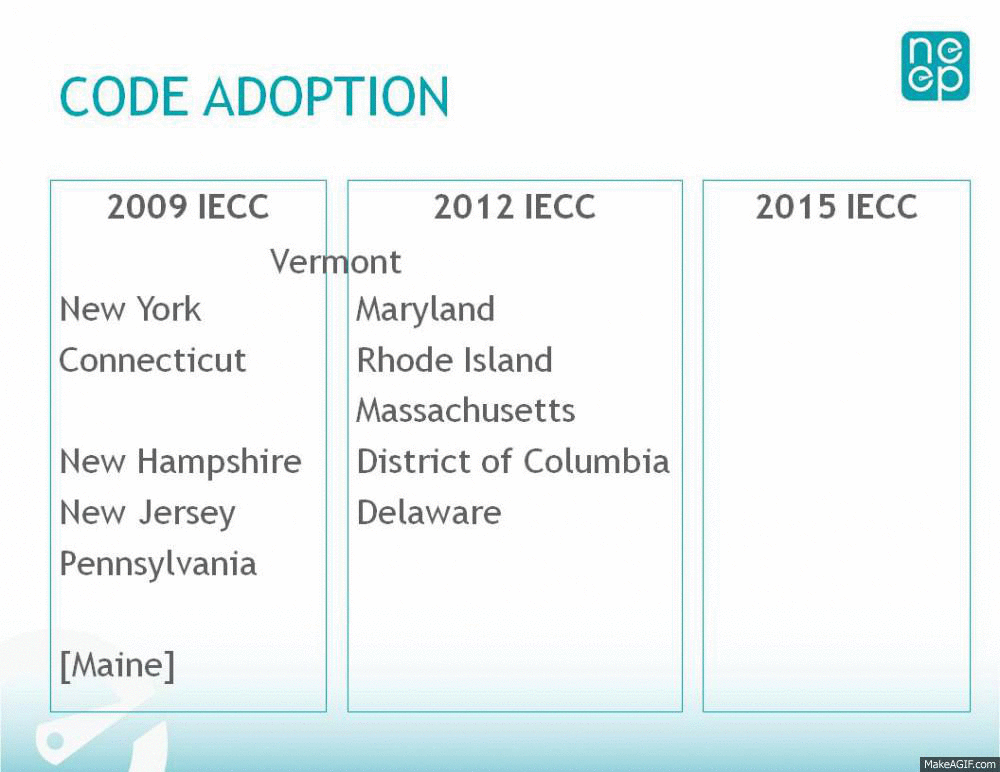By Kevin Rose | Wed, October 15, 14
Last month, NEEP held its annual full day Regional Building Energy Codes Leadership Group meeting in Philadelphia at the Consortium for Building Energy Innovation (CBEI). NEEP’s Codes Leadership Group is a forum for information dissemination and exchange between building energy code stakeholders in our region, including state and municipal agencies, utilities, building officials, practitioners, and more that convenes for three webinars and one full day meeting each year. This year’s meeting drew 30 stakeholders to the City of Brotherly Love to attend in person with another 31 participating virtually via live online webinar.
WELCOME—LOCAL FOCUS:
Martha Krebs, Director of CBEI (formerly the Energy Efficient Buildings Hub) led off the meeting by explaining CBEI’s strategic vision and focus areas. Jennifer Senick and David Hattis followed this up by discussing their work in the Philadelphia area in partnership with CBEI to promote code compliance under change of occupancy conditions to help accelerate retrofits in a way that’s scalable nationally.
THE FUTURE OF CODES—WHO HAS THE ANSWERS?:
Though the ink on the newest versions of the IECC and ASHRAE 90.1 has only recently dried, we took this opportunity to look ahead to subsequent code cycles since appreciable energy savings will have to come from new, innovative sources if we hope to achieve national targets. NEEP’s Josh Craft investigated the link between codes and product standards, Michael Jouaneh of Lutron attempted to predict the future of codes and controls, and Kurt Shickman of the Global Cool Cities Alliance discussed incorporating cool surfaces into code.
ONE YEAR LATER—BUILDING ASSET RATING:
After presenting for us at last year’s meeting, the US Department of Energy and Massachusetts returned to provide updates on their building asset rating performance programs, which inform owners about energy savings opportunities and allow potential tenants to incorporate energy efficiency as a decision criterion. Joan Glickman of DOE provided updates on the Home Energy Score and Commercial Asset Score tools, and Ian Finlayson of the Massachusetts Department of Energy Resources provided some conclusions following the Home MPG and Commercial BAR pilot programs.
CODE TOOLKITS—NEW RESOURCES FROM NEEP:
After lunch, Kevin Rose and Darren Port provided a taste of NEEP’s Code Adoption and Compliance toolkits—collections of best practices, case studies, analyses, and other regional and national code resources. Nick Corsetti of National Grid gave a quick update on one these case studies: Code Compliance Enhancement in Rhode Island through utility claimed savings. The toolkits will be completed by the end of the year and updated continuously thereafter.
THIS JUST IN—FEDERAL AND STATE CODE UPDATES:
With states eager to adopt the new code revisions and ARRA-stipulated compliance assessment requirements now three years away, Rose Bartlett of PNNL updated the Group on what federal resources and they can expect to receive. Also, Maryland and Pennsylvania—the states in the region that were awarded the DOE residential compliance assessment funding this summer—presented their winning strategies: David St. Jean of the Maryland Energy Administration discussed a suite of programs including circuit riders and codes coaches; and Libby Dodson, Mike Turns, and Shari Shapiro from the Pennsylvania’s Energy Code Collaborative (who got last licks due to home-field advantage) discussed a similar approach that will also mobilize HERS Raters in support of code compliance.
SHORT TAKES AND BUILDING TOUR:
The NEEP team closed out the meeting by providing updates on several items, most notably an overview by Jim O’Reilly of the potential role of codes in the northeast’s compliance with the contentious section 111(d) of the Clean Air Act. For in person participants, the meeting concluded in style with a tour of the new GridSTAR Net Zero Energy Demonstration Structure a short walk away.
Stay up to date with codes in the Northeast and Mid-Atlantic Regions!

